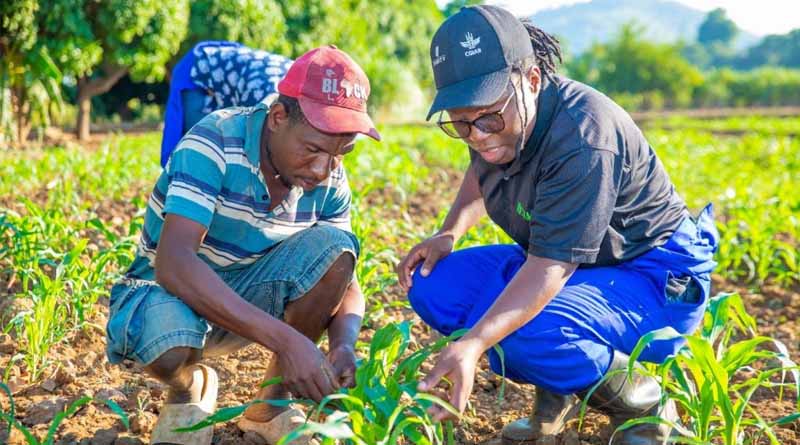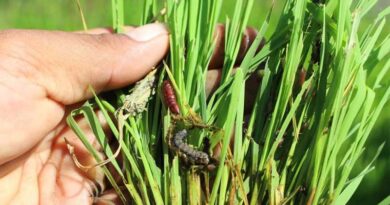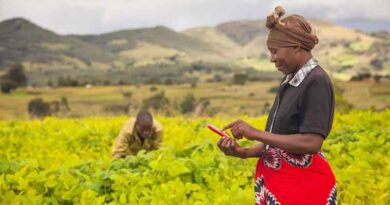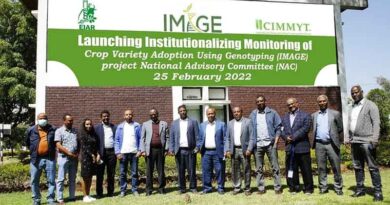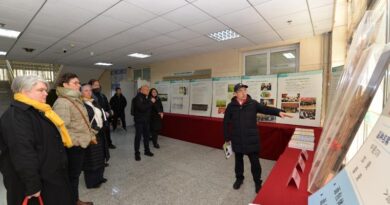Tackling fall armyworm with sustainable control practices
25 January 2024, Zimbabwe: Typically looking like a small caterpillar growing up to 5 cms in length, the fall armyworm (FAW, Spodoptera frugiperda) is usually green or brown in color with an inverted “Y” marking on the head and a series of black dots along the backs. Thriving in warm and humid conditions, it feeds on a wide range of crops including maize, posing a significant challenge to food security, if left unmanaged. The fall armyworm is an invasive crop pest that continues to wreak havoc in most farming communities across Africa.
The first FAW attack in Zimbabwe was recorded around 2016. With a high preference for maize, yield losses for Zimbabwe smallholder farmers are estimated at US$32 million. It has triggered widespread concern among farmers and the global food system as it destroyed large tracts of land with maize crops, which is a key staple and source of farmer livelihood in southern Africa. The speed and extent of the infestation caught farmers and authorities unprepared, leading to significant crop losses and food insecurity.
Exploring the destructive FAW life cycle
It undergoes complete metamorphosis, progressing through four main stages including egg, larva, pupa, and adult. Reproducing rapidly in temperatures ranging from 20 to 38°C, moist soil conditions facilitate the egg-laying process, while mild winters enable its survival in some regions. The larval stage is the most destructive phase, feeding voraciously on plant leaves and can cause severe defoliation. They can migrate in large numbers, devouring entire fields within a short period if left unchecked.
Working towards effective FAW management
Efficient monitoring, early detection, and appropriate management strategies are crucial for mitigating the impact of FAW infestations and protecting agricultural crops. To combat the menace of this destructive pest, CIMMYT, with support from the United States Agency for International Development (USAID), has been implementing research and extension on cultural control practices in Zimbabwe. One such initiative is the “Evaluating Agro-ecological Management Options for Fall Armyworm in Zimbabwe”. Since 2018, this project strives to address research gaps on FAW management and cultural control within sustainable agriculture systems. The focus of the research has been to explore climate-adapted push-pull systems and low-cost control options for smallholder farmers in Zimbabwe who are unable to access and use expensive chemical products.
Environment friendly practices are proving effective to combat FAW risks
To reduce the devastating effects of FAW, the project in Zimbabwe is exploring the integration of legumes into maize-based strip cropping systems as a first line of defense in the Manicaland and Mashonaland east provinces. By planting maize with different, leguminous crops such as cowpea, lablab and mucuna, farmers can disrupt the pests’ feeding patterns and reduce its population. Legumes release volatile compounds that repel FAW, reducing the risk of infestation. Strip cropping also enhances biodiversity, improves soil health and contributes to sustainable agricultural practices. Overall results show that FAW can be effectively managed in such systems and implemented by smallholder farmers. Research results also discovered that natural enemies such as ants are attracted by the legumes further contributing to the biological control of FAW.
Recently, the use of biopesticides such as Fawligen has gained traction as an alternative to fight against fall armyworm. Fawligen is a biocontrol agent that specifically targets the FAW larvae. Its application requires delicate attention – from proper storage to precise mixing and accurate application. Following recommended guidelines is essential to maximize its effectiveness and minimize potential risks to human health and the environment.
Impact in numbers
Since the inception of the project, close to 9,000 farmers participated in trainings and exposure activities and more than 4,007 farmers have adopted the practices on their own field with 1,453 hectares under improved management. Working along with extension officers from the Ministry of Lands, Agriculture, Water, Fisheries & Rural Resettlement, the project has established 15 farmer field schools as hubs of knowledge sharing, promoting several farming interventions including conservation agriculture practices (mulching, minimum tillage through ripping), timely planting, use of improved varieties, maintaining optimum plant population, and use of recommended fertilizers among others.
Addressing FAW requires a multi-faceted approach. The FAW project in Zimbabwe is proactive in tackling infestation by integrating intercropping trials with legumes, harnessing the application of biopesticides, and collaborative research. By adopting sustainable agricultural practices, sharing valuable knowledge, and providing farmers with effective tools and techniques, it is possible to mitigate the impact of FAW and protect agrifood systems.
Also Read: Exclusive: Why is Mancozeb important for UPL?
(For Latest Agriculture News & Updates, follow Krishak Jagat on Google News)

